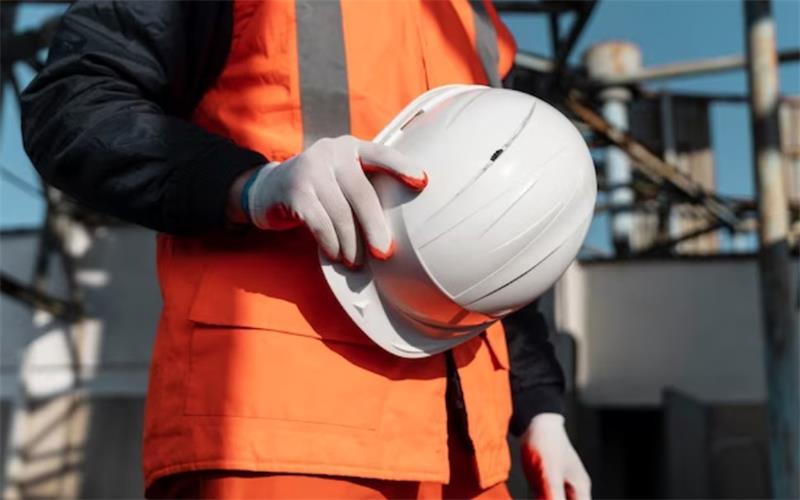In today’s dynamic and ever-evolving work environments, ensuring the safety of employees stands as a paramount concern for businesses worldwide. The significance of workplace safety cannot be overstated, especially as we step into the year 2024. The evolving landscape of industries, technologies, and global challenges necessitates a comprehensive approach to protect workers from potential hazards.
Amidst this backdrop, Personal Protective Equipment (PPE) plays a pivotal role in safeguarding employees across various sectors. From manufacturing floors to sterile healthcare facilities, and from construction sites to busy office spaces, the need for PPE extends to diverse workplaces.
Respiratory Protection
In the realm of respiratory protection, a suite of advanced tools serves as the frontline defense against airborne contaminants. These essential tools are crucial across a spectrum of industries, offering tailored solutions to address specific hazards.
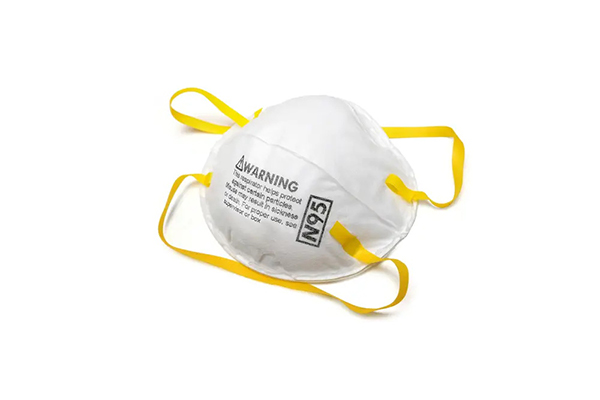
a. N95 Respirators:
N95 respirators are tight-fitting masks designed to filter out 95% of airborne particles, including viruses and bacteria.
Application: Widely used in healthcare settings, construction, and industrial environments where exposure to respiratory hazards is a concern.

b. Disposable Surgical Mask:
These masks are loose-fitting and provide a physical barrier to fluids and large particle droplets.
Application: Commonly used in healthcare and general public settings to prevent the spread of respiratory infections like influenza.

c. FFP2 Face Mask:
FFP2 masks, or similar KN95 masks, provide a higher level of respiratory protection by filtering both inflow and outflow air.
Application: Ideal for environments with fine dust particles, aerosols, and moderate respiratory risks.

d. Sponge Face Shield:
A lightweight, reusable shield made from sponge material that covers the nose and mouth.
Application: Suitable for everyday use, providing a comfortable and breathable option for individuals in various public settings.

e. Half-Face and Full-Face Respirators:
These respirators cover the nose, mouth, and, in the case of full-face models, the eyes, providing comprehensive protection.
Application: Essential in industrial settings where exposure to gases, vapors, and particulate matter is prevalent.
Respiratory protection is indispensable in safeguarding individuals from airborne hazards.
In summary, the significance of respiratory protection cannot be overstated. The diverse range of tools available ensures that individuals in various industries can customize their protection based on the specific airborne threats they face. As we navigate the evolving landscape of workplace safety in 2024, respiratory protection stands as a cornerstone, underscoring its vital role in preserving the health and well-being of workers across the globe.
Smart Helmets and Headgear
In the ever-evolving landscape of workplace safety, the integration of smart helmets and headgear marks a significant leap forward, combining innovation with practical functionality across various industries. These cutting-edge tools not only prioritize safety but also revolutionize communication and monitoring in the workplace.

a. Smart Helmets with Augmented Reality (AR):
These helmets feature built-in AR technology, providing workers with real-time information, schematics, and visual overlays directly in their line of sight.
Application: Commonly used in construction and manufacturing, AR helmets enhance precision and efficiency by offering workers vital data without the need to divert attention.
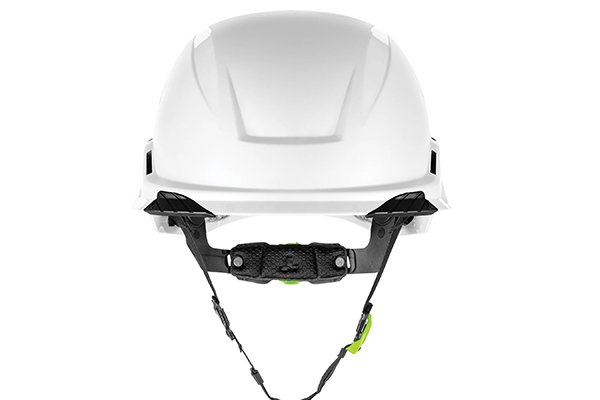
b. Communication-Enhanced Hard Hats:
Hard hats integrated with communication systems, including built-in microphones and speakers, facilitate seamless communication among workers.
Application: Ideal for noisy environments such as construction sites, where effective communication is crucial for safety and coordination.
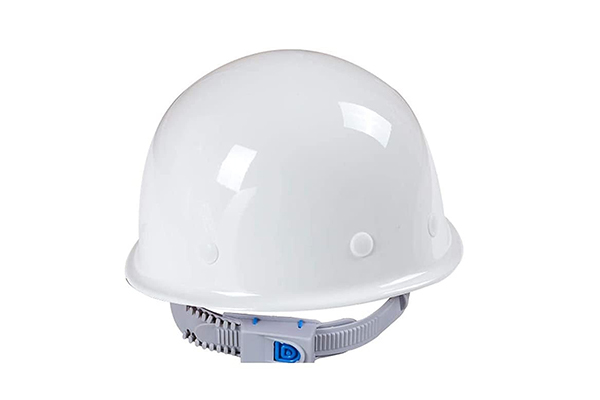
c. Impact-Resistant Smart Caps:
These caps are equipped with impact sensors that detect and measure the force of a collision, providing immediate alerts in the event of a potential head injury.
Application: Widely used in industries where head injuries are a concern, such as manufacturing and logistics.
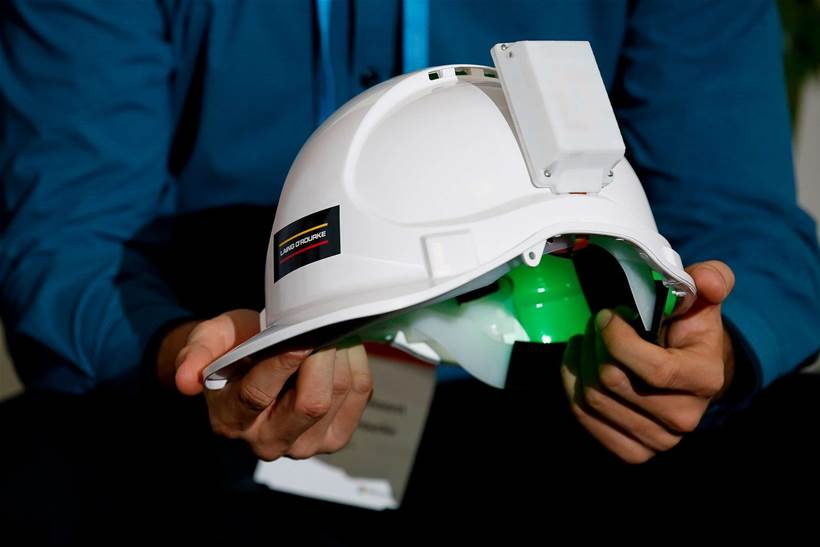
d. Sensor-Equipped Safety Helmets:
Helmets are embedded with sensors that monitor environmental conditions, such as temperature and air quality, to ensure optimal working conditions.
Application: Suitable for industries where workers are exposed to varying environmental factors, such as mining and outdoor construction.
e. Intelligent Headgear for Healthcare Professionals:
Headgear with integrated communication features, allows healthcare professionals to stay connected while attending to patients.
Application: In healthcare settings, these smart headgear solutions enhance communication efficiency among medical staff, improving patient care.
The importance of these intelligent headgear solutions lies not only in their ability to protect against physical hazards but also in their capacity to create smarter, more connected work environments. As we navigate the workplace challenges of 2024, smart helmets and headgear emerge as a testament to our commitment to advancing safety measures, ensuring that workers can perform their tasks with heightened protection and enhanced communication capabilities.
High-Tech Eyewear
The evolution of safety glasses and goggles has seen a remarkable fusion of traditional eye protection with cutting-edge technology. These advancements not only enhance safety but also introduce a new realm of functionality and adaptability in various work environments.
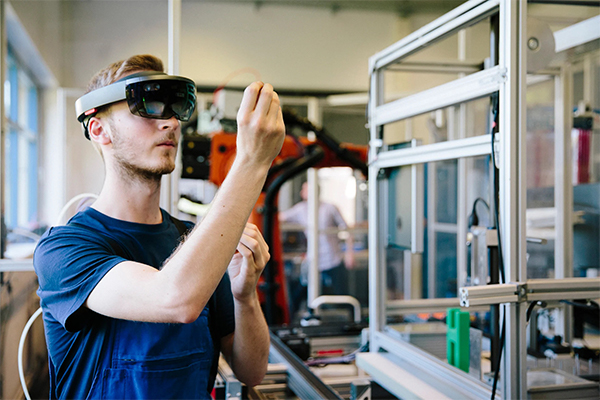
a. Augmented Reality (AR) Safety Glasses:
Safety glasses integrated with AR technology, provide wearers with real-time data, instructions, and overlays directly in their field of vision.
Application: Widely used in manufacturing and maintenance tasks, AR safety glasses improve precision and streamline complex processes.

b. Blue Light Filtering Goggles:
Goggles are designed to filter out harmful blue light emitted by digital screens, reducing eye strain and minimizing the risk of digital eye fatigue.
Application: Ideal for office workers, gamers, and anyone exposed to prolonged screen time, contributing to long-term eye health.
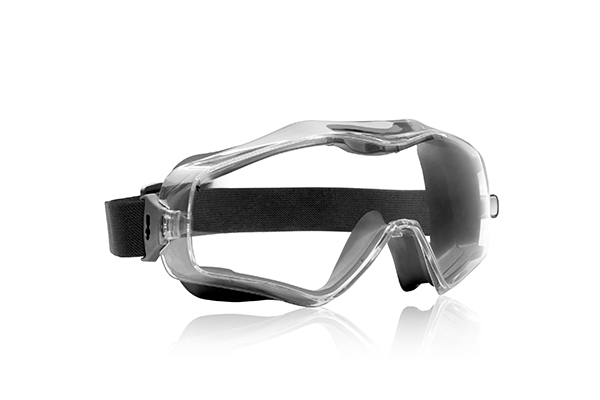
c. Impact-Resistant Smart Goggles:
Goggles are equipped with impact sensors that detect and alert wearers to potential hazards or collisions.
Application: Commonly used in construction, laboratories, and industrial settings where eye injuries from impact are a concern.
d. Prescription Safety Glasses with Heads-Up Display (HUD):
Safety glasses with built-in HUD for wearers who require prescription lenses, ensuring clear vision while displaying relevant information.
Application: Suitable for workers with vision impairments in various industries, providing a personalized and data-rich experience.
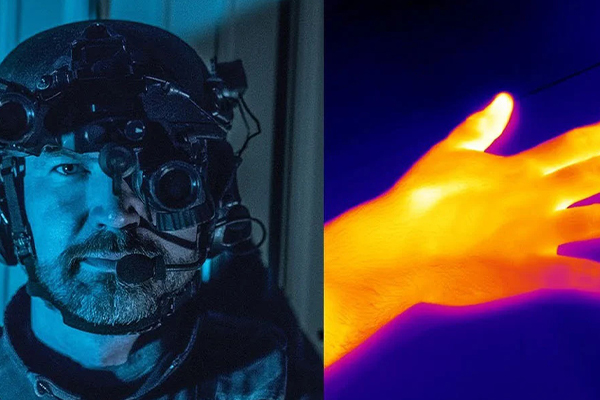
e. Thermal Imaging Safety Goggles:
Goggles featuring thermal imaging technology to detect heat signatures and potential hazards not visible to the naked eye.
Application: Applied in firefighting, search and rescue operations, and industrial settings to identify heat sources and improve situational awareness.
The incorporation of technology into high-tech eyewear not only elevates safety standards but also addresses specific challenges faced by individuals in different industries. For instance, AR safety glasses empower factory workers by offering real-time guidance, reducing errors, and improving overall efficiency. Blue light filtering goggles, on the other hand, cater to the modern workforce, prioritizing eye health in the digital age.
Advanced Hearing Protection
As we delve into the realm of advanced hearing protection, technological innovations have ushered in a new era of safeguarding our ears from the detrimental effects of noise in diverse work environments. These cutting-edge solutions not only aim to mitigate noise exposure but also enhance overall comfort and communication for individuals across various industries.

a. Active Noise-Canceling (ANC) Earplugs:
Earplugs equipped with ANC technology actively cancel out external noise, providing wearers with a quieter and more focused auditory environment.
Application: Ideal for individuals working in loud industrial settings, construction sites, or airports, ANC earplugs offer superior noise reduction without compromising situational awareness.
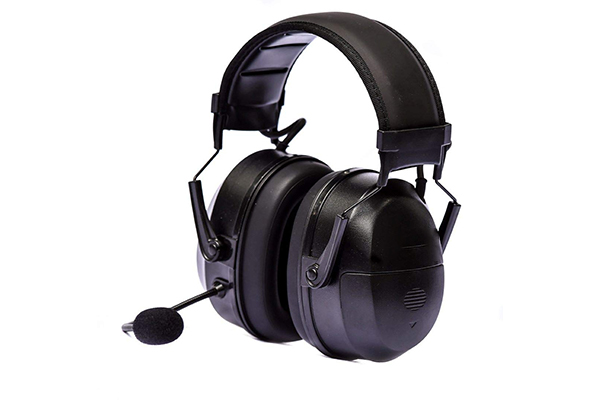
b. Smart Earmuffs with Communication Systems:
Earmuffs integrated with communication features such as built-in microphones and speakers, enable clear communication in noisy environments.
Application: Widely used in construction, manufacturing, and aviation, these earmuffs enhance communication efficiency among workers.
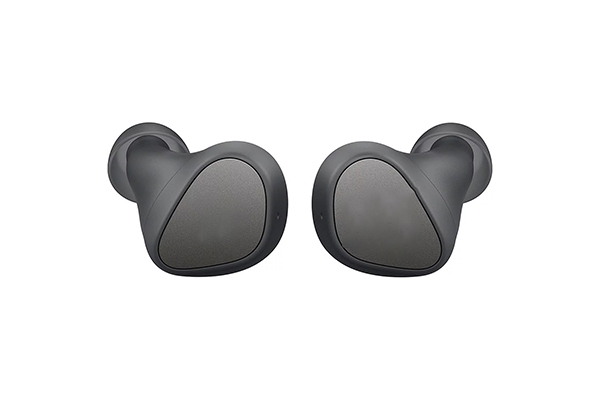
c. Customizable Noise-Isolating Earbuds:
Earbuds are designed to fit the unique contours of the wearer’s ears, providing a customized and secure fit for optimal noise isolation.
Application: Suitable for musicians, factory workers, or individuals in any setting where precision and comfort are crucial for prolonged use.
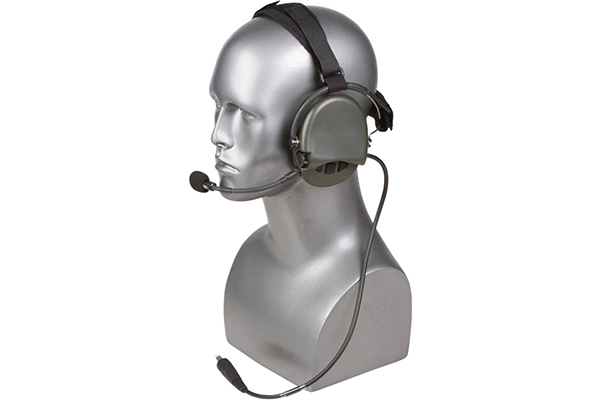
d. Digital Hearing Protection Headsets:
Headsets equipped with digital technology that automatically adjusts noise reduction levels based on the ambient noise in the environment.
Application: Commonly used in shooting ranges, construction, and military settings, where sudden loud noises require immediate and adaptive protection.
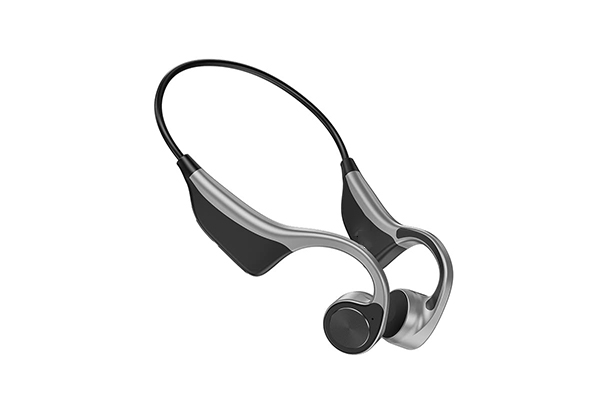
e. Bone Conduction Hearing Protectors:
Devices that transmit sound through bone conduction, leave the ear canal open for improved situational awareness.
Application: Useful for individuals who need to stay aware of their surroundings, such as cyclists, runners, or workers in busy environments.
The significance of advanced hearing protection extends beyond mere noise reduction; it encompasses the preservation of one of our most valuable senses. For example, ANC earplugs not only reduce the impact of noisy machinery but also allow wearers to hear important warning signals. Smart earmuffs not only protect against excessive noise but facilitate seamless communication, fostering a safer and more collaborative work environment.
Impact-Resistant Gloves
These gloves, crafted with advanced materials and technologies, not only shield hands from potential risks but also ensure optimal protection in various challenging environments.

a. Coated Gloves:
Coated gloves are available in different materials, such as polyurethane (PU), latex, nitrile, and PVC, offering versatile protection against impacts and abrasions.
Application: Suitable for a wide range of industries, including construction, manufacturing, and general assembly work, where hand protection is essential.

b. Cut-Resistant Gloves:
Specifically designed to protect against cuts and lacerations, these gloves often feature materials like Kevlar® or high-performance polyethylene.
Application: Essential for industries where sharp objects and blades are prevalent, including metalworking and glass handling.

c. Impact-Resistant Gloves with Padding:
Gloves equipped with impact-resistant padding, which may include features like gel packs or foam technology, providing enhanced protection against blunt force.
Application: Ideal for tasks involving heavy machinery operation, construction, and other activities where impact hazards are present.

d. Thermal-Insulated Impact Gloves:
Gloves designed to protect hands from impact while providing thermal insulation are often used in environments with extreme temperatures.
Application: Suitable for welding, foundry work, and tasks that expose hands to both impact and heat hazards.
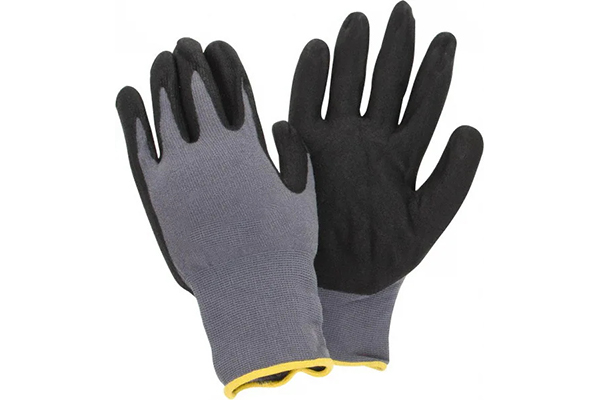
e. General-Purpose Safety Gloves:
Multipurpose gloves are designed for general hand protection, offering a balance between dexterity and safeguarding against impacts and abrasions.
Application: Commonly used in industries like automotive, warehousing, and maintenance, providing overall hand safety for various tasks.
The versatility of impact-resistant gloves lies in their ability to address a wide range of hazards. For example, coated gloves with different materials cater to specific needs, such as chemical resistance or grip requirements. Cut-resistant gloves offer specialized protection for tasks involving sharp objects, emphasizing the importance of safeguarding hands from potential lacerations.
The importance of impact-resistant gloves extends beyond immediate injury prevention; they contribute to the overall safety and well-being of workers in physically demanding professions.
Ergonomic Footwear
Ergonomic footwear is a cornerstone of workplace safety, ensuring that individuals are equipped with the right protection for their feet in various work environments. These specialized shoes go beyond mere comfort, incorporating features that contribute to overall well-being and injury prevention.
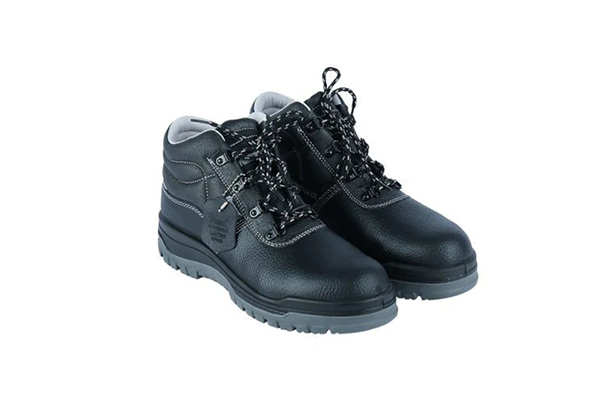
a. Steel-Toe Safety Shoes:
Safety shoes with reinforced steel toes provide impact protection, and shielding against falling objects or compression hazards.
Application: Widely used in construction, manufacturing, and warehouse settings where heavy materials or machinery pose risks to the feet.
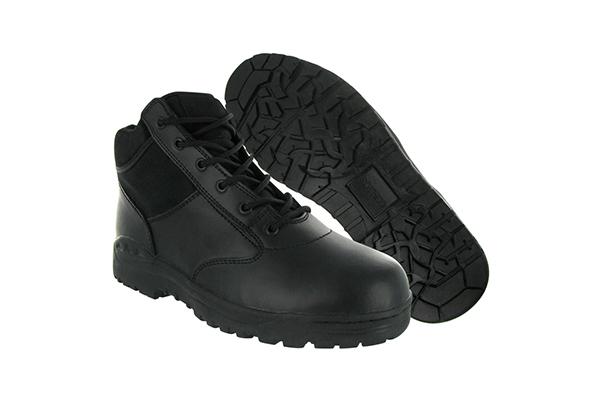
b. Slip-Resistant Work Boots:
Boots are designed with slip-resistant outsoles to prevent slips, trips, and falls, especially in environments where surfaces may be wet or oily.
Application: Essential in kitchens, hospitals, and any workplace where liquid spills or slippery surfaces are common.
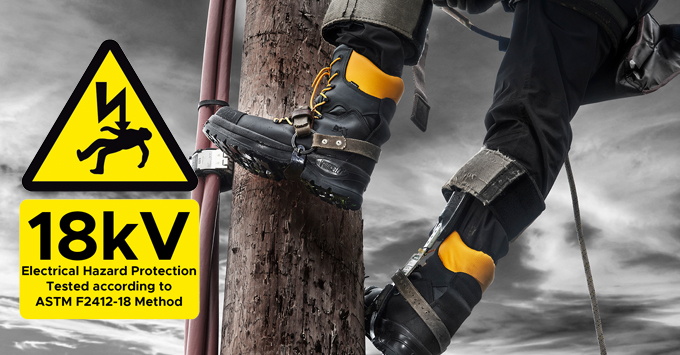
c. Electrical Hazard (EH) Footwear:
EH-rated footwear provides insulation against electrical shocks, safeguarding individuals working in environments with electrical hazards.
Application: Crucial for electricians, maintenance workers, and anyone exposed to electrical equipment or wiring.
d. Composite Toe Safety Shoes:
Similar to steel toes but made of non-metal materials, composite toes offer impact protection without conducting temperature, making them suitable for various working conditions.
Application: Ideal for those working in environments with metal detectors, or in extreme temperatures, where steel toes may not be practical.
e. Anti-Fatigue Insoles and Midsoles:
Ergonomic footwear often incorporates insoles and midsoles designed to reduce fatigue and absorb shock, enhancing overall comfort during prolonged periods of standing or walking.
Application: Beneficial for healthcare professionals, retail workers, and anyone whose job involves extended periods of being on their feet.
The importance of ergonomic footwear transcends mere comfort; it directly impacts the safety and well-being of workers. For instance, steel-toe safety shoes protect against impacts and prevent injuries from punctures or compression. Slip-resistant work boots are crucial in minimizing the risk of accidents in environments where slipping hazards are prevalent, emphasizing the need for preventive measures.
As we navigate the landscape of workplace safety in 2024, ergonomic footwear stands as a fundamental element in creating secure work environments. By combining comfort with specialized features, these shoes contribute to injury prevention, ensuring that individuals can confidently perform their tasks and reduce the risk of foot-related injuries.
Wearable Technology for Safety Monitoring
The integration of wearable technology into the realm of workplace safety marks a revolutionary step forward, ushering in a new era of proactive and real-time safety measures. These innovative devices not only enhance monitoring capabilities but also empower individuals and organizations to respond swiftly to potential hazards.
a. Smart Helmets:
Helmets equipped with sensors and communication technology for real-time data collection. They provide insights into the wearer’s environment and vital signs.
Application: Widely used in construction, mining, and emergency response scenarios, where immediate awareness of the surroundings is critical.

b. Safety Wearables with GPS Tracking:
Wearable devices with built-in GPS technology to track the location of workers. They enable real-time monitoring of personnel in large or hazardous work areas.
Application: Commonly used in oil and gas operations, logistics, and search and rescue missions, enhancing worker safety and facilitating efficient emergency responses.
c. Health Monitoring Bracelets:
Bracelets equipped with biometric sensors to monitor vital signs such as heart rate and body temperature. They provide early warnings for signs of fatigue or stress.
Application: Beneficial in industries where workers are exposed to physically demanding tasks, helping prevent fatigue-related accidents.
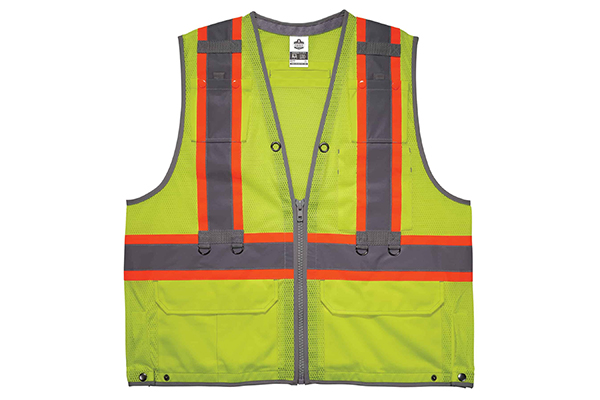
d. Connected Safety Vests:
Safety vests with embedded sensors for monitoring environmental conditions such as air quality and temperature. They transmit data in real-time for analysis.
Application: Suitable for industrial settings where workers may be exposed to fluctuating environmental conditions, ensuring a safe working environment.

e. Wearable Gas Detectors:
Portable devices are worn by individuals to detect the presence of harmful gases. They provide instant alerts and can communicate with centralized safety systems.
Application: Critical in confined spaces, chemical plants, and industries where exposure to hazardous gases is a concern, preventing respiratory issues and accidents.
The significance of wearable technology in safety monitoring lies in its ability to transform data into actionable insights. For example, smart helmets not only protect the head but also provide supervisors with real-time information about the wearer’s surroundings. Safety wearables with GPS tracking enhance the efficiency of emergency responses by quickly pinpointing the location of workers in need.
Hi-Vis Apparel with Embedded Technology
The evolution of high-visibility clothing goes beyond its traditional role and steps into the realm of cutting-edge safety solutions. Today, hi-vis apparel integrates advanced technologies, enhancing visibility and overall safety in various work environments. These innovations not only improve the wearer’s conspicuity but also contribute to accident prevention through increased awareness.

a. LED-Enhanced Hi-Vis Vests:
Vests embedded with LED lights or light strips to enhance visibility, especially in low-light or dark conditions.
Application: Widely used in construction, traffic control, and emergency response, where workers need to be easily seen in challenging lighting conditions.
b. Reflective Technology Jackets:
Jackets incorporate reflective materials that respond to external light sources, significantly increasing visibility during nighttime or low-visibility situations.
Application: Essential for road construction workers, cyclists, and individuals working in areas with limited ambient light.
c. Smart Hi-Vis Helmets:
Helmets with built-in technology such as embedded LEDs or augmented reality (AR) displays, provide enhanced visibility and real-time data.
Application: Suitable for construction, mining, and any industry where both head protection and visibility are crucial.
d. GPS-Enabled Safety Apparel:
Hi-vis clothing is integrated with GPS technology to track the location of workers in real-time. This feature enhances both visibility and location monitoring.
Application: Beneficial in large construction sites, airports, and logistics operations, ensuring the safety of workers and facilitating efficient coordination.
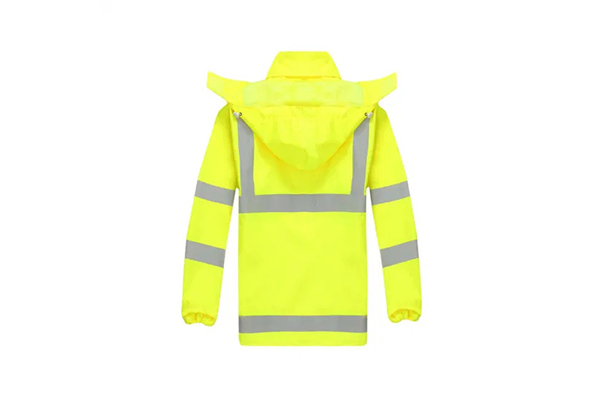
e. Photochromic Hi-Vis Clothing:
Clothing that changes color in response to varying light conditions, ensuring optimal visibility in different environments.
Application: Ideal for individuals working outdoors, such as utility workers or surveyors, adapting to changing lighting conditions for continuous visibility.
As we navigate the landscape of workplace safety in 2024, hi-vis apparel with embedded technology stands as a testament to our commitment to creating environments where visibility and safety go hand in hand.
Cooling and Heat Stress Prevention Gear
In the field of workplace safety, addressing heat-related risks is paramount, and the development of cooling and heat stress prevention gear represents a crucial stride in safeguarding workers from the adverse effects of high temperatures.
a. Cooling Vests:
Vests are equipped with cooling elements or materials that help regulate body temperature by dissipating heat.
Application: Essential in industries such as construction, agriculture, and firefighting, where workers are exposed to high temperatures for extended periods.
b. Evaporative Cooling Bandanas:
Bandanas are made from materials that absorb water and release it through evaporation, providing a cooling effect.
Application: Ideal for outdoor workers, especially in landscaping and maintenance, where a quick cooling solution is needed.
c. High-Tech Cooling Helmets:
Helmets with built-in cooling mechanisms, such as fans or moisture-wicking materials, to prevent heat buildup.
Application: Commonly used in industries like manufacturing and welding, where workers wear helmets for extended periods in hot environments.
d. Personal Cooling Fans:
Wearable fans provide a constant flow of air to keep individuals cool in hot conditions.
Application: Suitable for outdoor workers, warehouse staff, and anyone working in confined spaces where ventilation may be limited.
e. Moisture-Wicking Clothing:
Clothing made from moisture-wicking fabrics that draw sweat away from the body, promoting evaporation and cooling.
Application: Widely adopted in various industries, including sports, construction, and manufacturing, for workers engaged in physically demanding tasks.
The importance of cooling and heat stress prevention gear extends beyond comfort—it directly impacts the health and well-being of individuals working in challenging environments. For instance, cooling vests not only keep workers comfortable but also reduce the risk of heat-related illnesses, such as heat stroke. Evaporative cooling bandanas provide a quick and accessible solution for maintaining a cool body temperature during outdoor activities.
Full-Body Protection Suits
In workplace safety, full-body protection suits emerge as comprehensive solutions tailored for industries where workers face multiple hazards. These suits provide an all-encompassing shield, ensuring the safety of individuals in environments with diverse risks.

a. Chemical-Resistant Coveralls:
Coveralls are made from materials that resist penetration by harmful chemicals and liquids, safeguarding the wearer against chemical exposure.
Application: Crucial in laboratories, chemical plants, and emergency response situations where contact with hazardous substances is a constant threat.

b. Fire-Resistant Jumpsuits:
Description: Jumpsuits are constructed from flame-resistant materials to protect against heat and flames, reducing the risk of burns in fire-prone environments.
Application: Essential for firefighters, welders, and individuals working in industries where open flames or high temperatures are prevalent.

c. Biological Hazard Suits:
Description: Suits designed to provide a barrier against biological contaminants, including viruses and bacteria, ensuring protection in medical and biohazard scenarios.
Application: Critical for healthcare professionals working in infectious disease units, laboratories, and during pandemic response efforts.

d. Radiation Protection Suits:
Suits are equipped with materials that shield against ionizing radiation, protecting nuclear-related industries or environments.
Application: Used in nuclear power plants, radiology facilities, and nuclear emergency response situations to prevent radiation exposure.
e. Multi-Hazard Protective Coveralls:
Versatile coveralls are designed to protect against a combination of hazards, such as chemicals, flames, and particulate matter.
Application: Suitable for industries with varied risks, including petrochemical plants, construction, and manufacturing, where workers encounter multiple hazards.
The importance of full-body protection suits lies in their ability to offer comprehensive coverage, minimizing the risks associated with specific workplace hazards. For example, chemical-resistant coveralls not only shield against chemical spills but also protect against splashes of hazardous liquids. Fire-resistant jumpsuits not only guard against flames but also provide thermal insulation, reducing the risk of heat-related injuries.
Considerations for PPE Procurement
When procuring Personal Protective Equipment (PPE) for a specific industry, several critical factors should guide the decision-making process. Tailoring your choices to meet the unique needs of the workplace enhances both effectiveness and user compliance.
Risk Assessment:
Example: In construction, where head injuries are a risk, prioritizing head protection such as hard hats is essential.
Nature of Hazards:
Example: For industries dealing with chemicals, selecting chemical-resistant gloves ensures proper hand protection against corrosive substances.
Comfort and Fit:
Example: Workers in healthcare settings may require comfortable and well-fitting masks to ensure all-day wear without compromising efficacy.
Durability and Lifespan:
Example: In welding, where sparks are common, choosing flame-resistant clothing with a durable lifespan is crucial.
Training Requirements:
Example: High-tech safety equipment, like augmented reality glasses, may require comprehensive training for proper use in manufacturing.
Climate and Environmental Conditions:
Example: In hot climates, selecting breathable and moisture-wicking materials for PPE promotes comfort and reduces the risk of heat-related illnesses.
Ease of Maintenance:
Example: Opting for PPE that is easy to clean and maintain is crucial in industries where hygiene is paramount, such as food processing.

